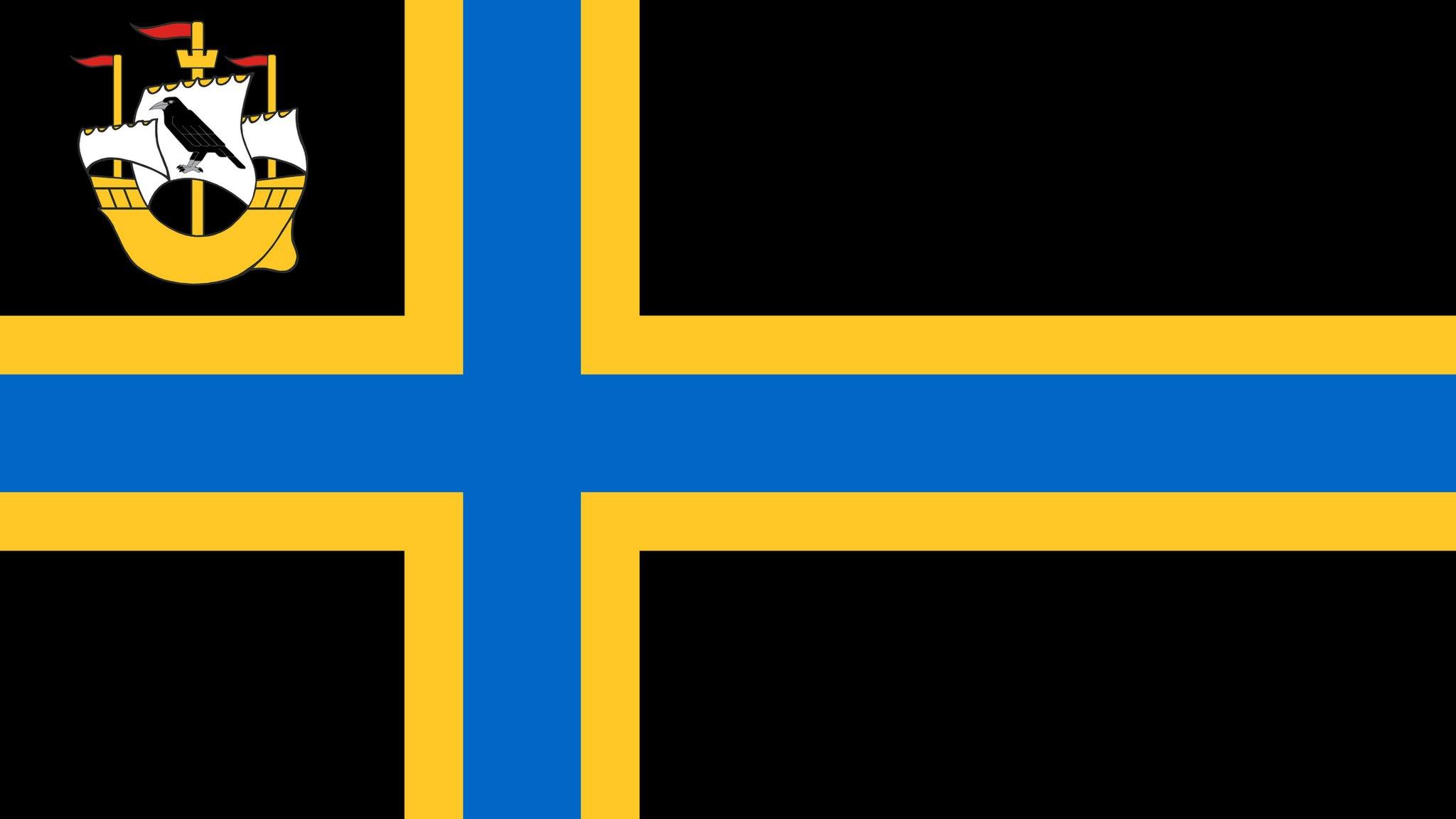Vote opens on flag for Sutherland
- Published
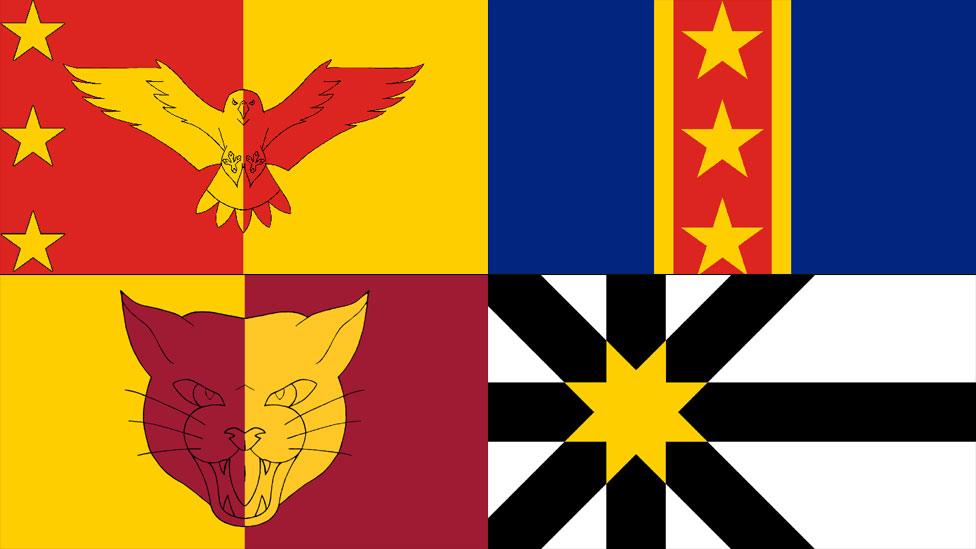
Four designs are in the poll
Voting for a flag to represent Sutherland has opened.
The four designs in the poll were from more than 350 entries and feature range of colours and emblems, including stars, an eagle, a wildcat and a Nordic cross.
A design was chosen by a judging panel earlier this year, but the choice was strongly criticised on social media.
This flag, which features a swooping eagle, is among the four designs now being put to a public vote.
People can vote online, external, or by sending a letter or postcard with their choice, name and postcode to Sutherland Flag, c/o Highland Council, Drummuie, Golspie, Sutherland KW10 6TA.
The vote, which is open to people living or working in Sutherland, will be open until 26 November.
'Superb, bold flags'
The Flag Institute has been commissioned by the Sutherland Flag Committee to help support the vote and ensure the process, as well as the designs, meet "best practice standards" and are equivalent to those run elsewhere in Scotland, including the Isle of Tiree and Sutherland's northerly neighbour Caithness.
Philip Tibbetts, honorary vexillologist to the Court of the Lord Lyon, the body which will formally recognise the winning flag, said: "I look forward to seeing which design the public choose and fully commend the competition organisers for setting this vote up so rigorously.
"This vote follows the highest standards used elsewhere and brings the whole competition in line with the others in Scotland to date.
"All the finalists will make superb, bold flags and they showcase the rich range of heritage that the county enjoys."
The flag designs and what they symbolise:

The flag at the centre of the row will again be in contention for the winning design
In the centre of this design is an eagle in a forward swooping position. Eagles, both white-tailed sea eagles and golden eagles, are re-establishing themselves in the west and east of Sutherland, symbolising the unity of the county.
Along the red hoist are three golden stars to emphasise, along with the red and gold colours, the traditional symbols of Sutherland as drawn from the ancient Scottish Earldom.
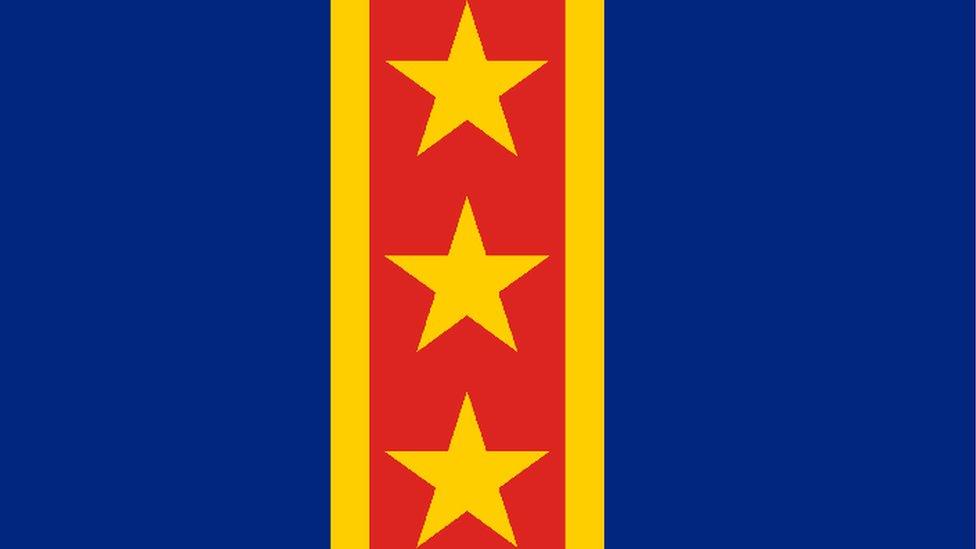
The three golden stars of the ancient Scottish Earldom of Sutherland are placed on a thin red vertical stripe.
This stripe recalls the "thin red line"' of the famous defence of the Sutherland Highlanders at the Battle of Balaclava and the enduring brave spirit of the people of the county.
Either side of the red stripe is blue, separated by gold, which recalls the position of the county having both Atlantic and North Sea coasts.
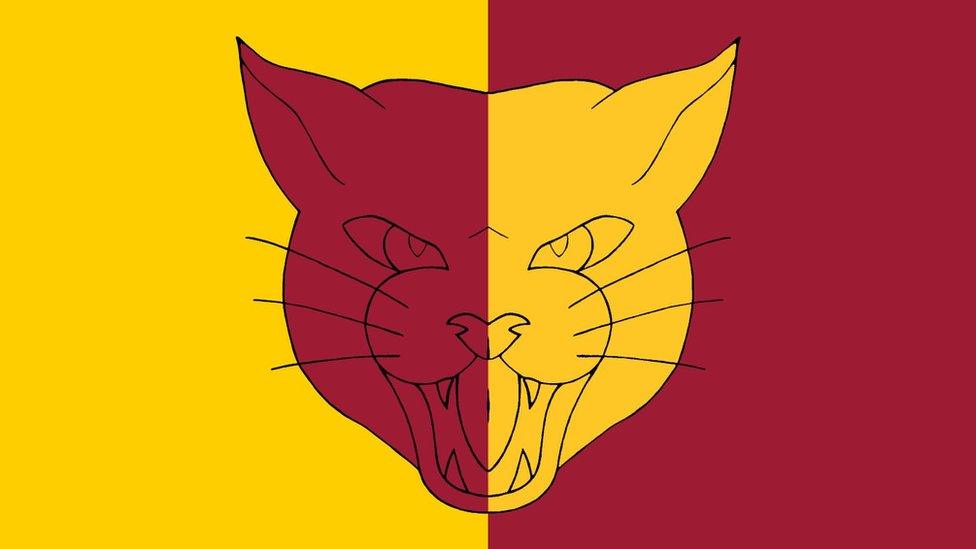
The vertical division of the flag recalls the distinctive east and west sides to the county, according to the Flag Institute. Over the top is placed a wildcat counter-changed in the yellow and maroon colours.
The colours represent both the county's flora and "blood of its soldiers and civilians".
The wildcat is symbol that originated from the crest of the Earls of Sutherland and subsequently used by the successors of the Sutherland Highlanders, as well as the 5th Battalion Seaforth Highlanders. It is also used by the Clynelish Distillery and Ross and Sutherland Rugby.
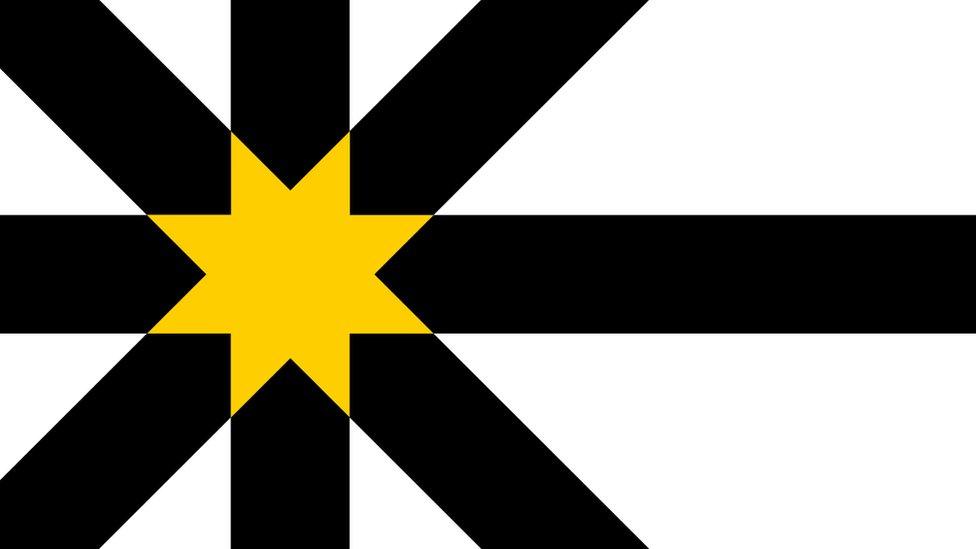
The over-layed Saltire and Nordic crosses denote Sutherland's unique history on the mainland where the extent of Viking control met Scotland.
The golden sun that is formed where the arms of the crosses meet symbolise the sun raised high in the south for the origin of the county name South Land as well as the sunrises seen on the east coast and sunsets on Sutherland's west coast.
The black recalls the peat of the Flow Country and dark skies and together with the white recall the central colours of the former Sutherland Council arms.
- Published23 March 2018
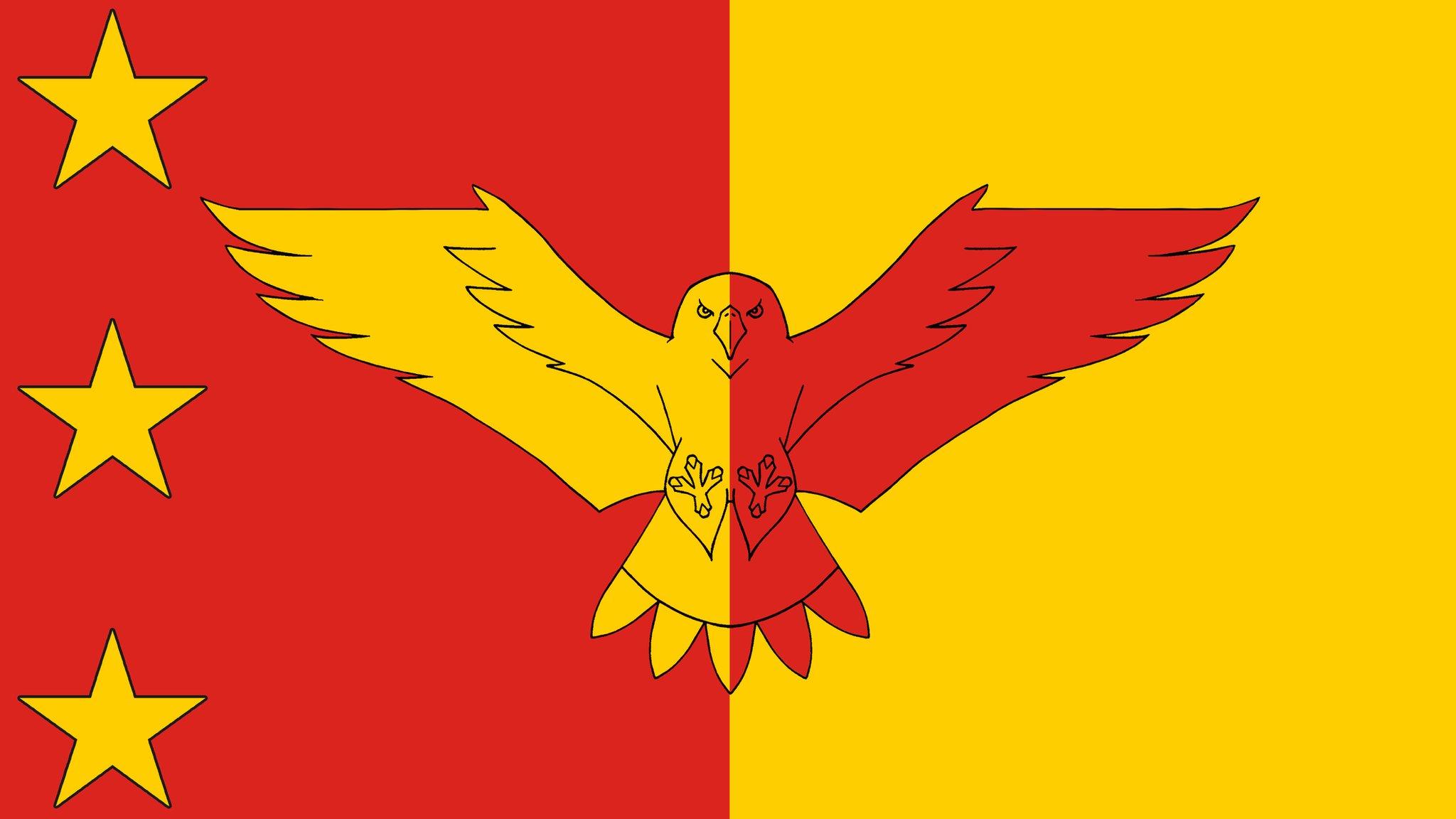
- Published9 February 2018

- Published23 November 2017
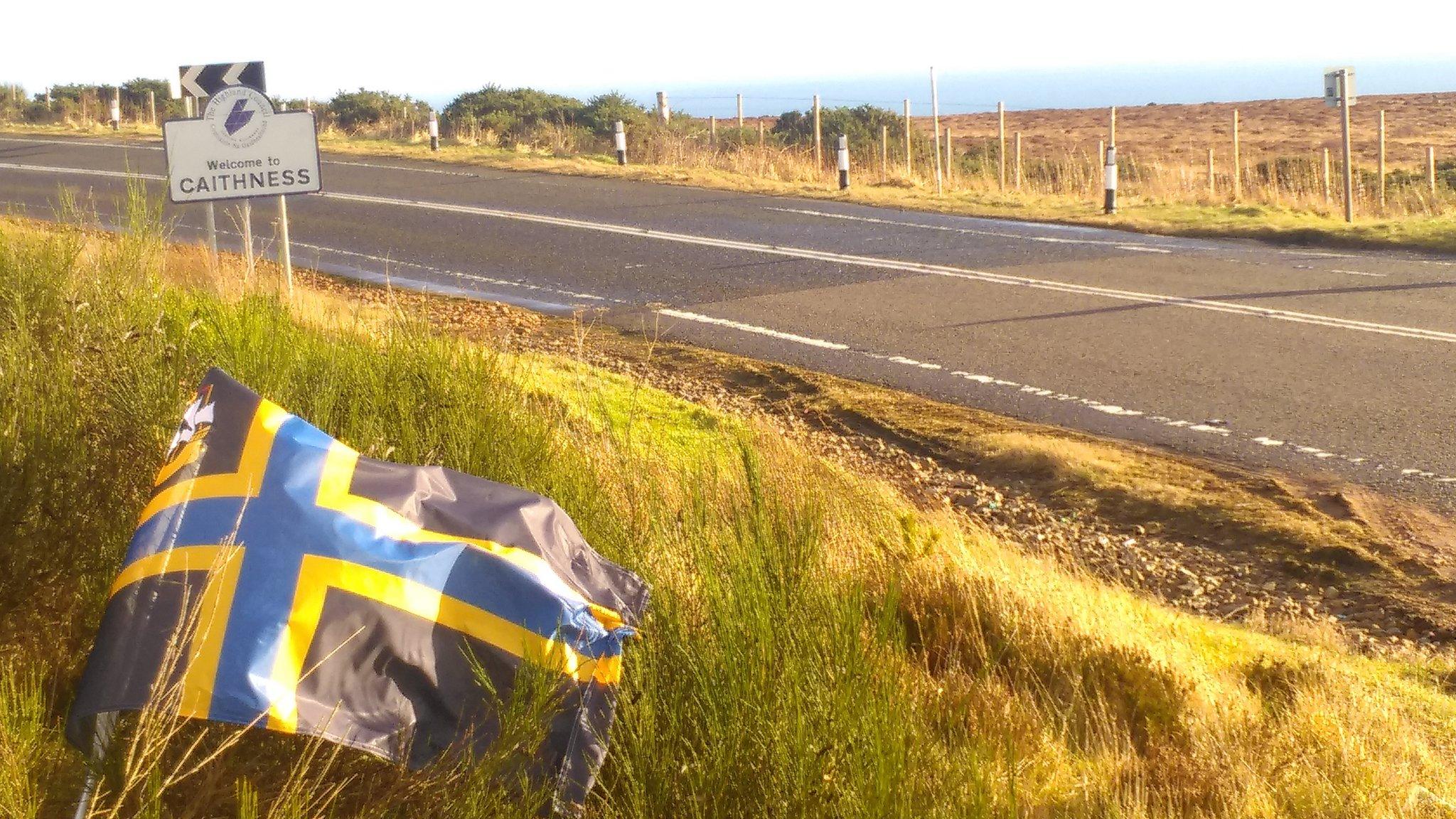
- Published23 November 2017
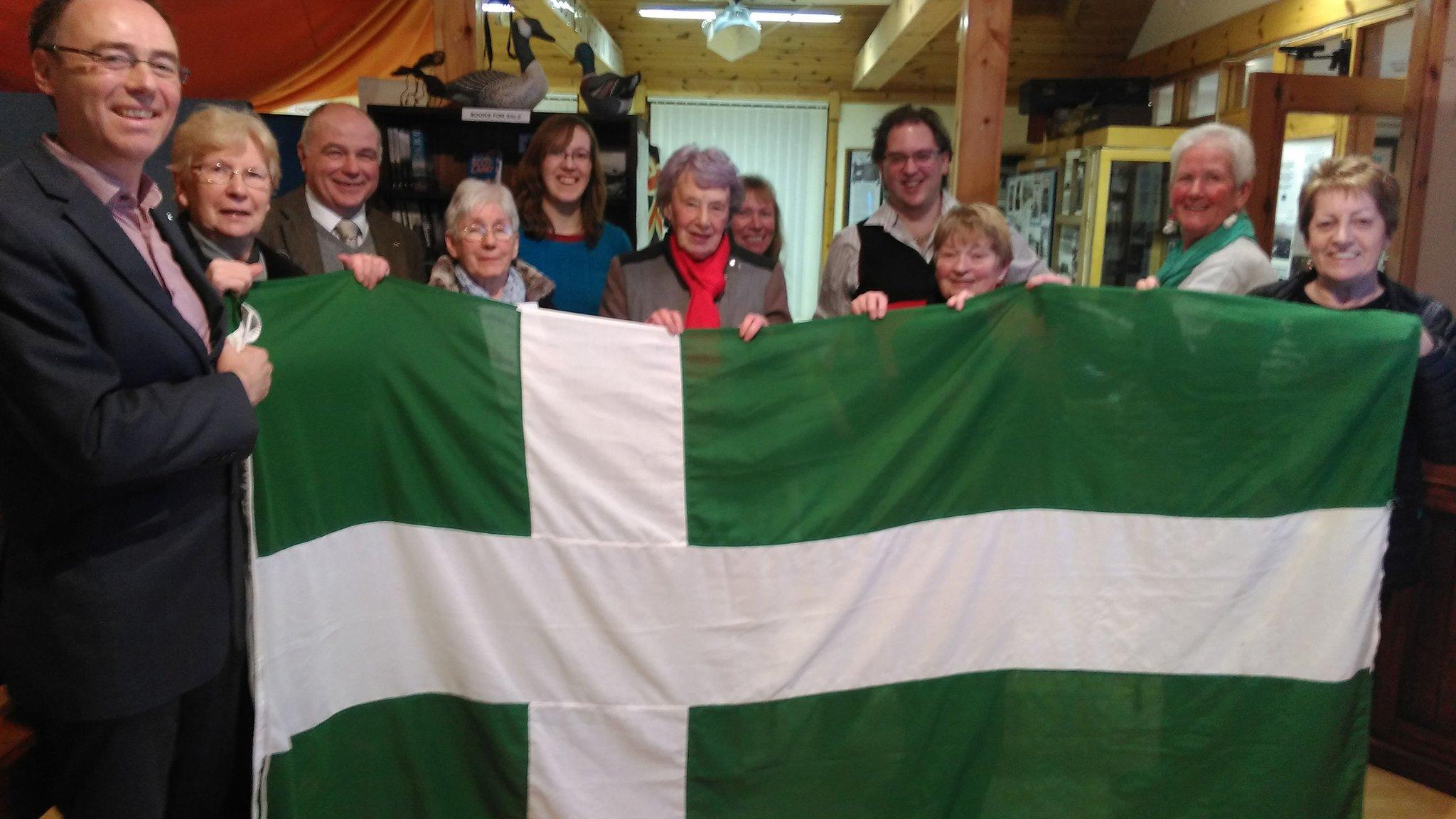
- Published26 January 2016
